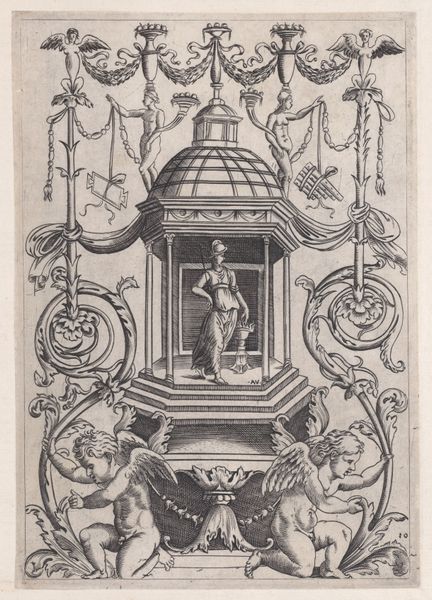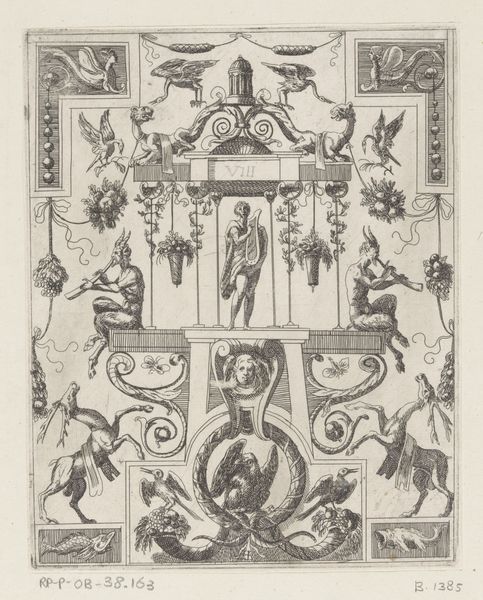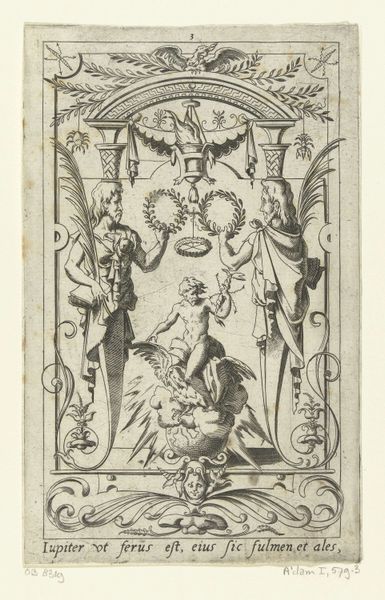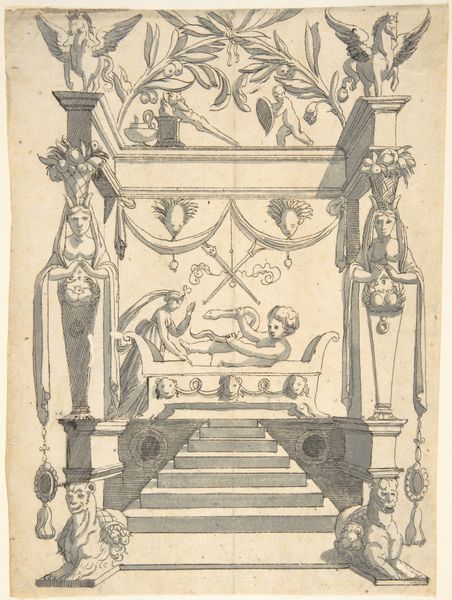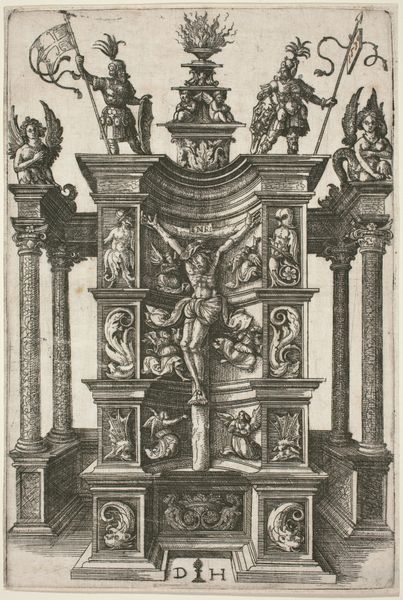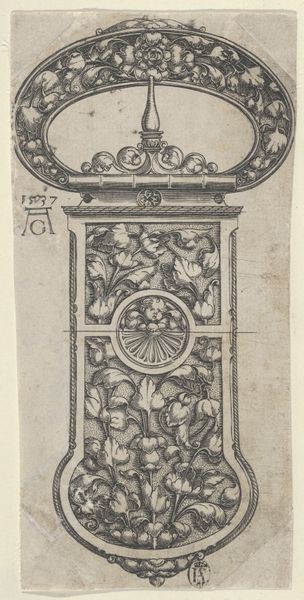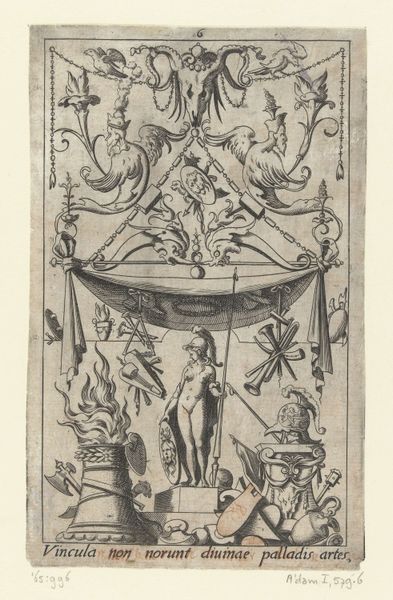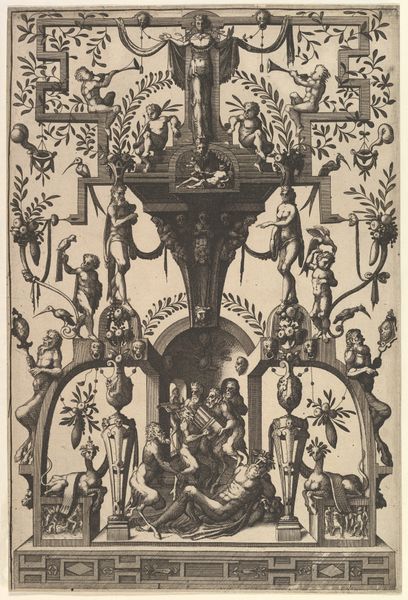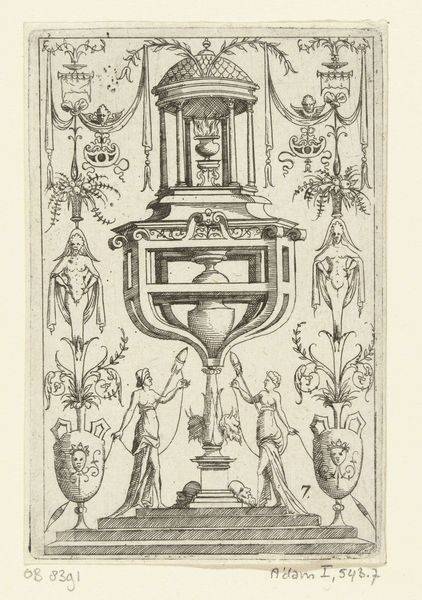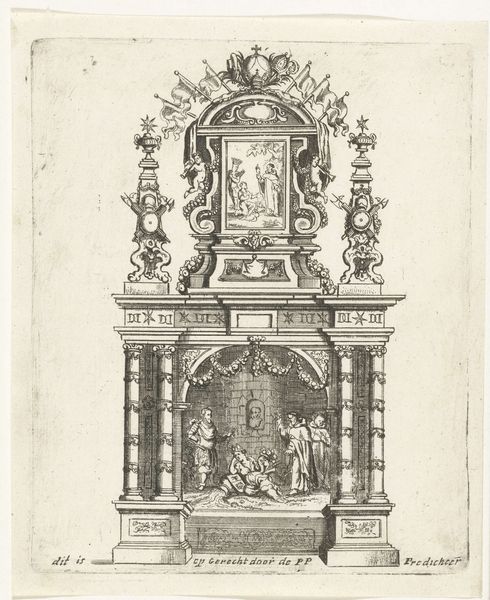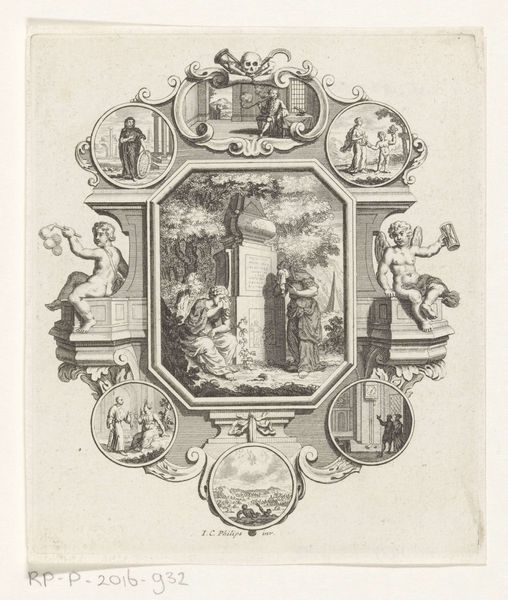
Grotesque with a Female Figure (Minerva?) in a Temple-like Structure with a Cupola 1540 - 1570
0:00
0:00
drawing, tempera
#
drawing
#
pen drawing
#
tempera
#
figuration
#
11_renaissance
#
history-painting
#
italian-renaissance
#
miniature
Dimensions: Sheet: 8 9/16 x 5 5/8 in. (21.8 x 14.3 cm)
Copyright: Public Domain
Curator: What an intriguing drawing! This is "Grotesque with a Female Figure (Minerva?) in a Temple-like Structure with a Cupola." It was created by an anonymous artist sometime between 1540 and 1570. Editor: It feels almost architectural, doesn't it? All those rigid lines creating depth and symmetry. Yet there's a softness to it, an airiness, from the cherubs and floral flourishes. Curator: The grotesque style was all the rage during the Italian Renaissance. Inspired by the rediscovery of ancient Roman decorations, artists filled spaces with fantastical combinations of figures, foliage, and architectural elements. Think of it as visual overload, reflecting the era’s newfound enthusiasm for classical antiquity. Editor: Exactly, there is this sense of visual exuberance that keeps one searching all over. But let’s focus on Minerva, assuming that's her inside that little temple structure. The way she’s positioned, with that spear and offering, adds to this drawing’s somewhat cool tonality. Curator: Indeed, she seems central. Her inclusion would suggest a cultivated patronage. Renaissance society used art to elevate their status, often referencing classical deities to connect themselves to the glory of ancient empires and legitimise power. And, here, rendered with pen and tempera. Remarkable precision, given the complexity of the design. Editor: Agreed! The artist's technical skill shines. I'm fascinated by how the hatching and cross-hatching create depth and volume, particularly in the cupola above the temple. It’s almost like a miniature architectural rendering. Curator: It also speaks to the broader cultural shift of the Renaissance. The era rediscovered not only ancient art, but also, and fundamentally, new methods of thinking, and this is showcased within this single, powerful drawing. Editor: You know, analysing this has altered my initial read, which was simply "decorative". Now, I see an intriguing play of power, patronage and the artist's attempt to construct these in a unified visual whole. Curator: And, in turn, looking at the artwork through your formal analysis also sheds light on the power that drawing in itself has within society. Interesting!
Comments
No comments
Be the first to comment and join the conversation on the ultimate creative platform.
